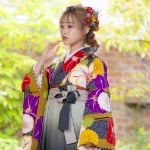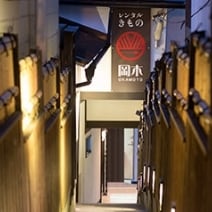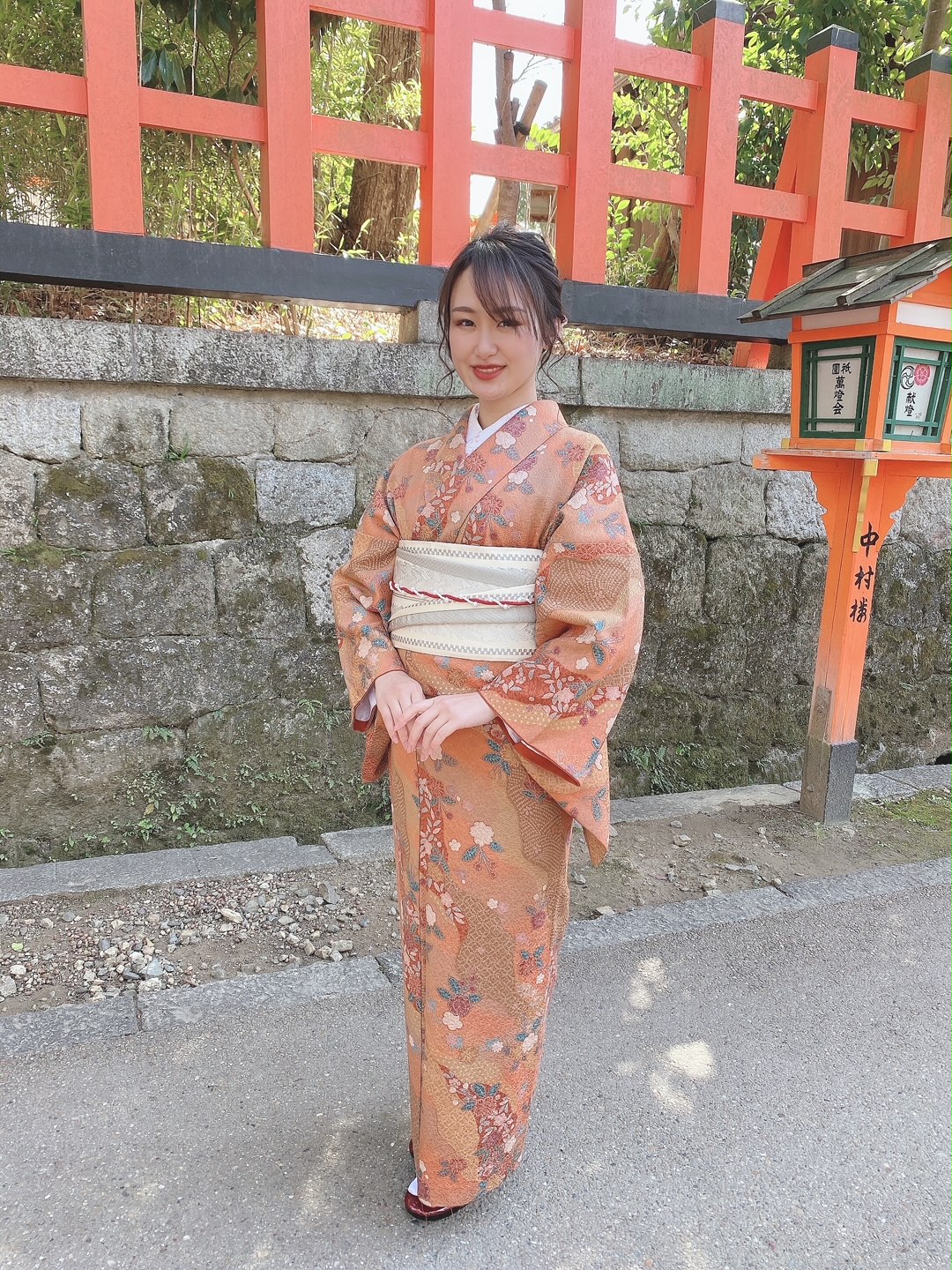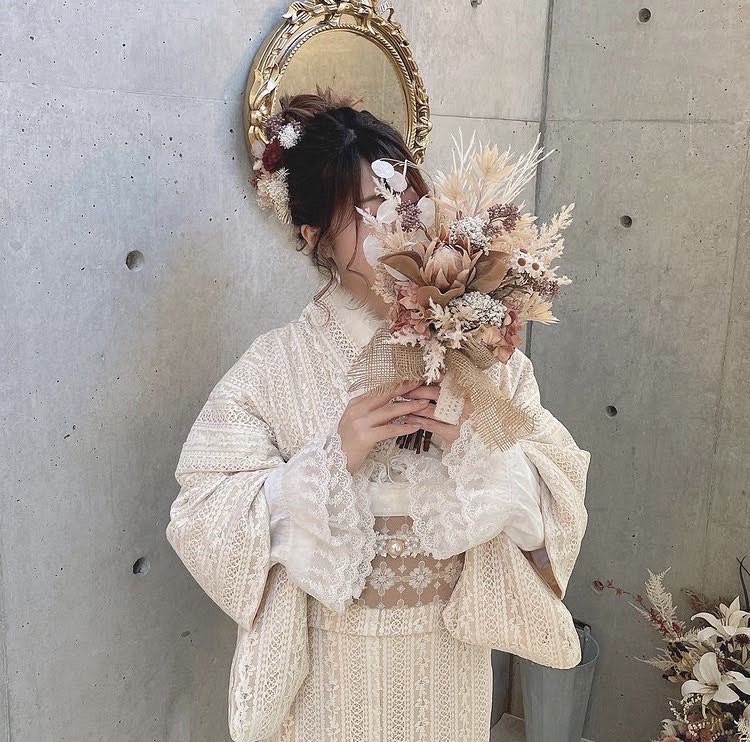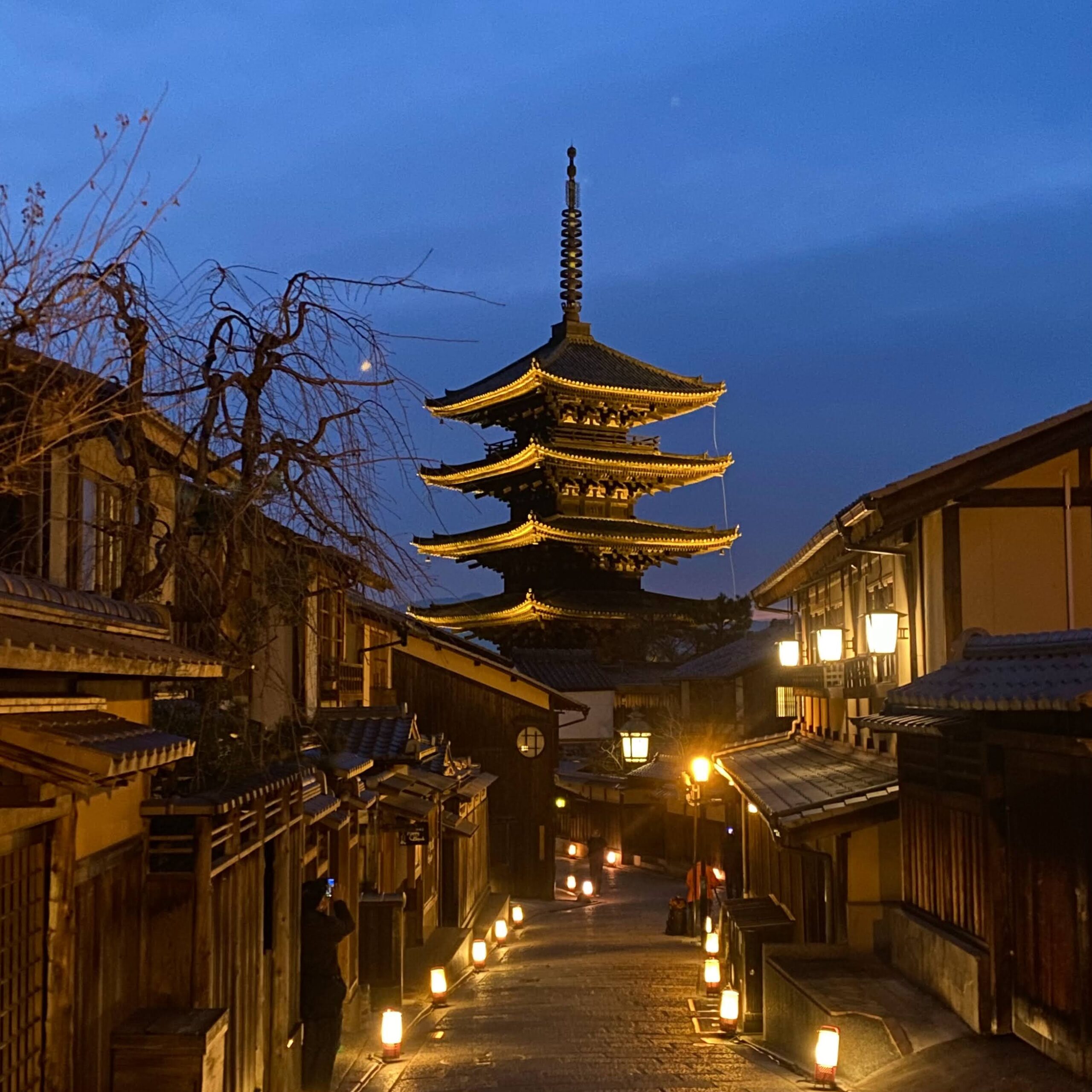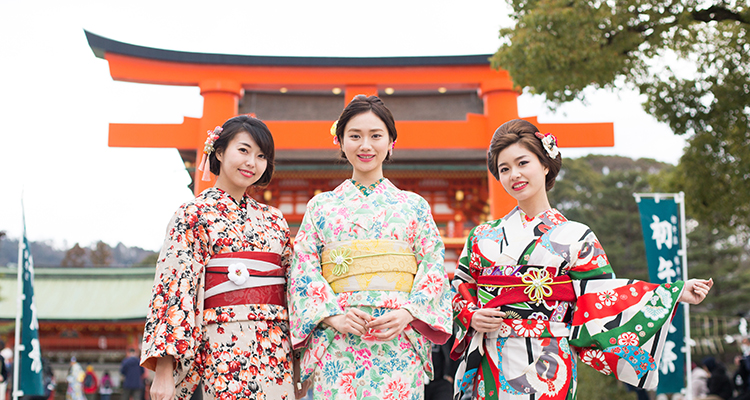
special fearure・column
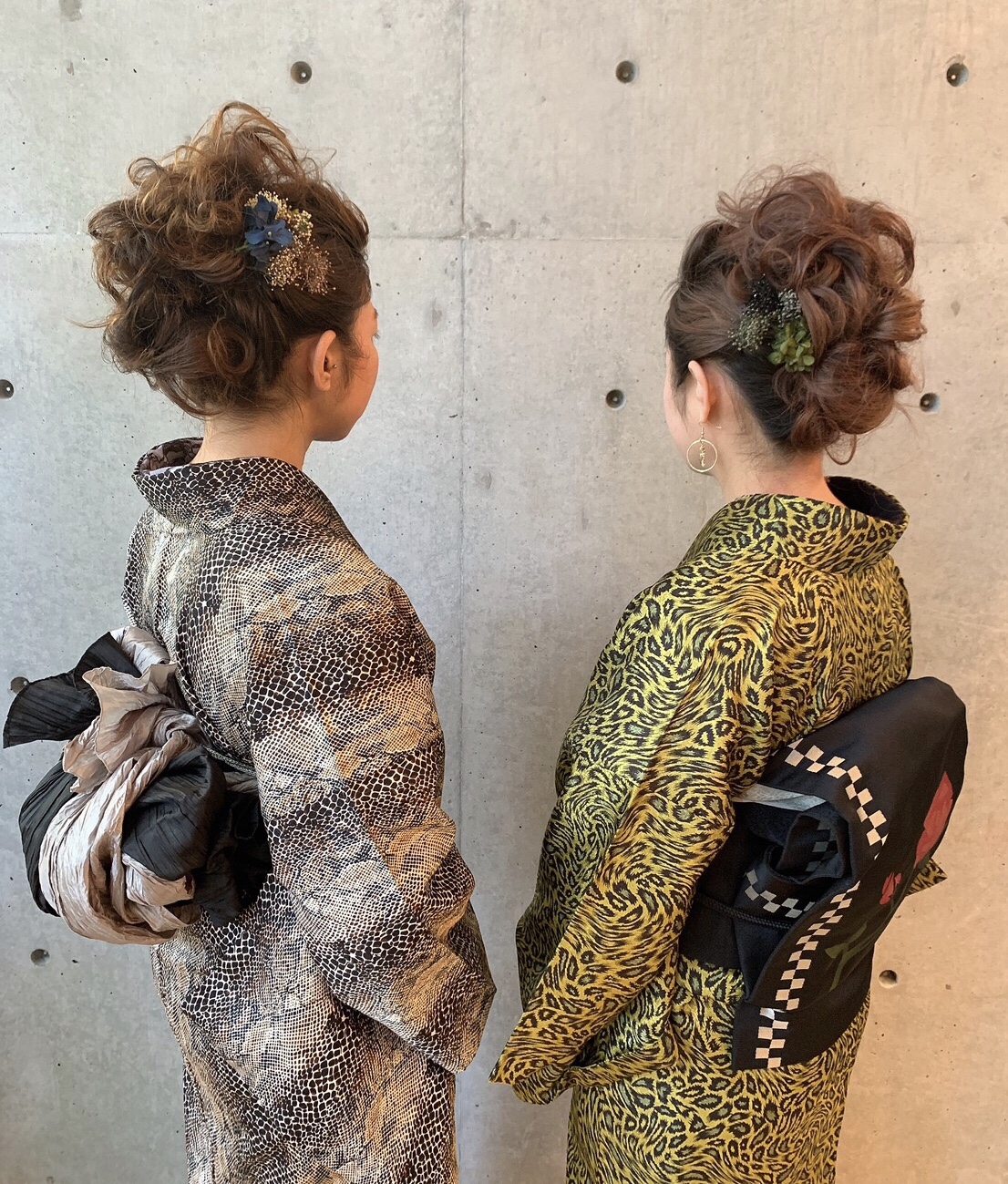
Express Yourself with Unique Kimono Styling
◆What does "individuality" mean?
I recently had the chance to read a book published about 50 years ago. In it, I came across an article titled “Kimono and Paris.” It described a Japanese fashion designer living in Paris at the time, walking down Rue Saint-Honoré in a kimono—paired with a leather belt instead of a traditional obi.
Such a style would have been unimaginable in Japan 50 years ago.
Back then, had someone walked the streets of Japan dressed that way, they might have been stopped and told, "That’s not how you wear a kimono," or "Something looks off."
However, the French response to that coordination wasn’t to label it as "Japanese clothing" or "Western clothing," but rather to view it as an expression of a person—as a whole individual.
Unlike the Japanese tendency to focus on strict rules and how pieces should be properly matched, the French seemed to look at the entire person and the story behind why they dressed that way.
It was a way of getting to know someone through their fashion choices—a mindset that was already deeply rooted in Paris 50 years ago, where fashion was seen as a reflection of one's personality.
That said, the traditional Japanese perspective—that "kimono should be worn a certain way"—is also admirable.
It reflects a deep respect for the beauty and dignity of kimono.
Our ways of thinking are largely shaped by the history, culture, and times we live in.
Wearing kimono in line with its traditional rules and roots is a beautiful way to enjoy Japanese culture.
At the same time, mixing modern elements and expressing your individuality through kimono is just as wonderful.
After all, "individuality" means to exist as one’s true self.
There are plenty of books and websites to teach you the proper way to wear kimono.
Here, we’d like to introduce ideas on how to enjoy kimono in your own style, and how to use kimono to express your individuality.
◆From Traditional Kimono Looks to Personalized Styling
In the past, kimono were mainly worn by those practicing traditional arts like tea ceremony or flower arrangement, or by older generations. For younger people, it was something only worn on special occasions like Coming-of-Age ceremonies or weddings—if at all.
Many people associated kimono with ryokan (traditional inns) and their hostesses.
However, over the past decade, inbound tourism has brought a new wave of interest.
Tourists visiting Japan often say, “If I’m going to Kyoto, I want to wear a kimono,” and began renting kimono to walk around the city. That trend has since spread.
About ten years ago, the kimono and obi pairings seen around Kyoto tended to follow very set patterns: contrasting colors between kimono and obi, or pulling colors from the kimono pattern to coordinate accessories.
Pink, red, and other vibrant florals were especially popular—bright, bold, and eye-catching.
But things have changed.
With the rise of Instagram-worthy fashion, kimono became more popular among younger generations—not as something worn out of necessity, but simply because they wanted to wear one.
They began styling kimono like everyday clothing—freely and creatively, each person expressing their unique taste.
Nowadays, we often see one-tone styles in soft colors, lace turtlenecks layered under kimono, kimono worn with boots, and many other creative looks inspired by Western fashion.
While trends change, the heart of kimono remains—adapting and evolving.
It’s a reflection of how Japanese fashion, too, has entered an era of individual expression.
◆Stylish Ways to Show Your Personality
Animal Print Kimono?!
When you think of animal prints—python, zebra, leopard, dalmatian—you probably picture Western-style clothes. But these patterns work surprisingly well with kimono too, and make a bold, stylish statement.
Kimono with leopard print are especially striking and memorable.
Python prints, on the other hand, have a surprisingly natural look and are great for beginners.
Animal “Motif” Kimono
There are also kimono with subtle animal motifs—like dragons, cats, butterflies, cranes, bats, or crows—decorating solid or plaid fabrics.
Butterflies and cranes have long been symbols of good fortune in kimono patterns. But in today’s styles, they often appear as small, delicate accents—like tiny butterflies scattered across a houndstooth background.
Obi (sashes) are also getting playful: some feature tiny panda prints, curious kittens in various poses, or other whimsical designs.
If you’re just looking to add a touch of animal flair, try incorporating it through accessories like obi or small items—it can add a hidden charm to your outfit.
Mixing Cute and Cool with Accessories
We’ve also seen people modernizing vintage kimono—like solid-colored ones from the Showa era—by adding lace or ribbon accents.
But how exactly do you use lace and ribbons in kimono styling?
Start small:
Swap the traditional collar lining (haneri) with a lace version.
Layer lace over your obi.
Replace decorative cords (obijime) with ribbons.
To make lace stand out even more:
Layer it on the collar or cuffs.
Use two types of ribbon with different textures.
Add frills to your collar, cuffs, or obi for extra cuteness.
Hair is also part of the styling!
Try a braided style with scattered mini ribbons, or add dried flowers for a dreamy touch.
Use brooches as obi accessories to mix Japanese and Western styles—it pairs perfectly with lace.
Want something more cool than cute?
Choose your lace color and placement carefully.
The key to cool lace styling is balance—knowing when to add, and when to hold back.
Taisho Roman (Retro-Modern) Style
Taisho Roman kimono often feature bold polka dots, checks, and Western flowers like roses, tulips, and sweet peas.
They’re colorful, vibrant, and full of vintage charm.
Pair them with a sleek obi and Art Deco-style obi accessories.
Try retro hairstyles like “bubble ponytails” or finger waves, and complete the look with a vintage headpiece.
The hakama outfit shown below features a striking contrast:
a vivid red kimono with bold floral patterns paired with a pure white hakama.
These two elements complement each other beautifully.
Adding a plaid obi and pearl accents, along with a lace ribbon at the chest, gives the ensemble a modern Taisho Roman vibe—don’t you think?

A simple vertical-striped kimono, styled with sophistication, can easily transform depending on the obi—it can look either sweet or cool.
Incorporating lace into the juban (under-kimono) or obi can add a touch of elegance while softening the overall chic style.

Animal prints are also rising in popularity.
Even a slightly daring yellow leopard-print kimono can feel refined and mature when paired with a black Nagoya obi.
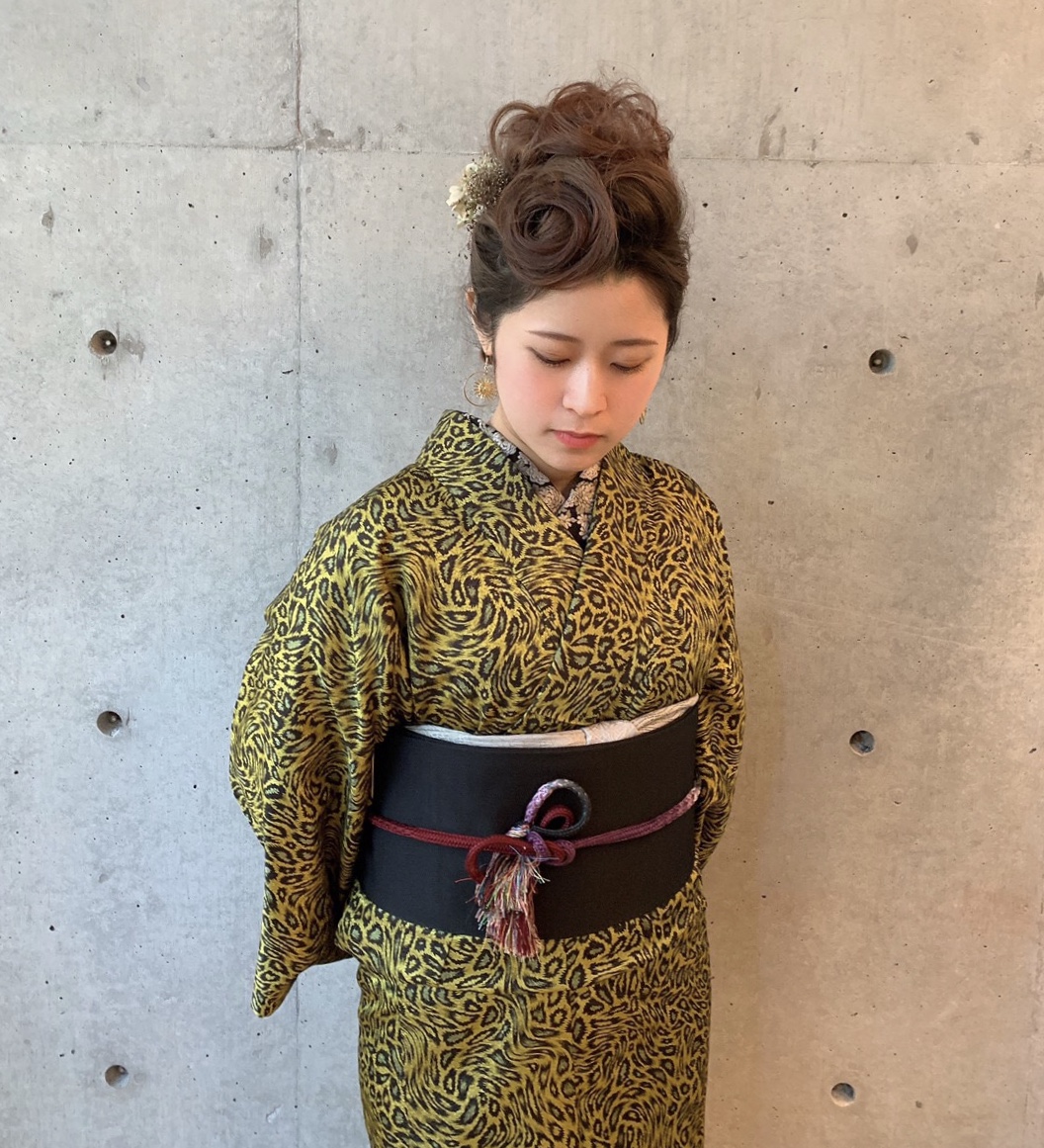
A python-print kimono with strong impact can be softened with a casual heko obi, creating a more relaxed and gentle impression.
If you want to go for a bold and edgy look, unify the color palette and pair it with a punk-inspired hairstyle—your individuality will shine even more!
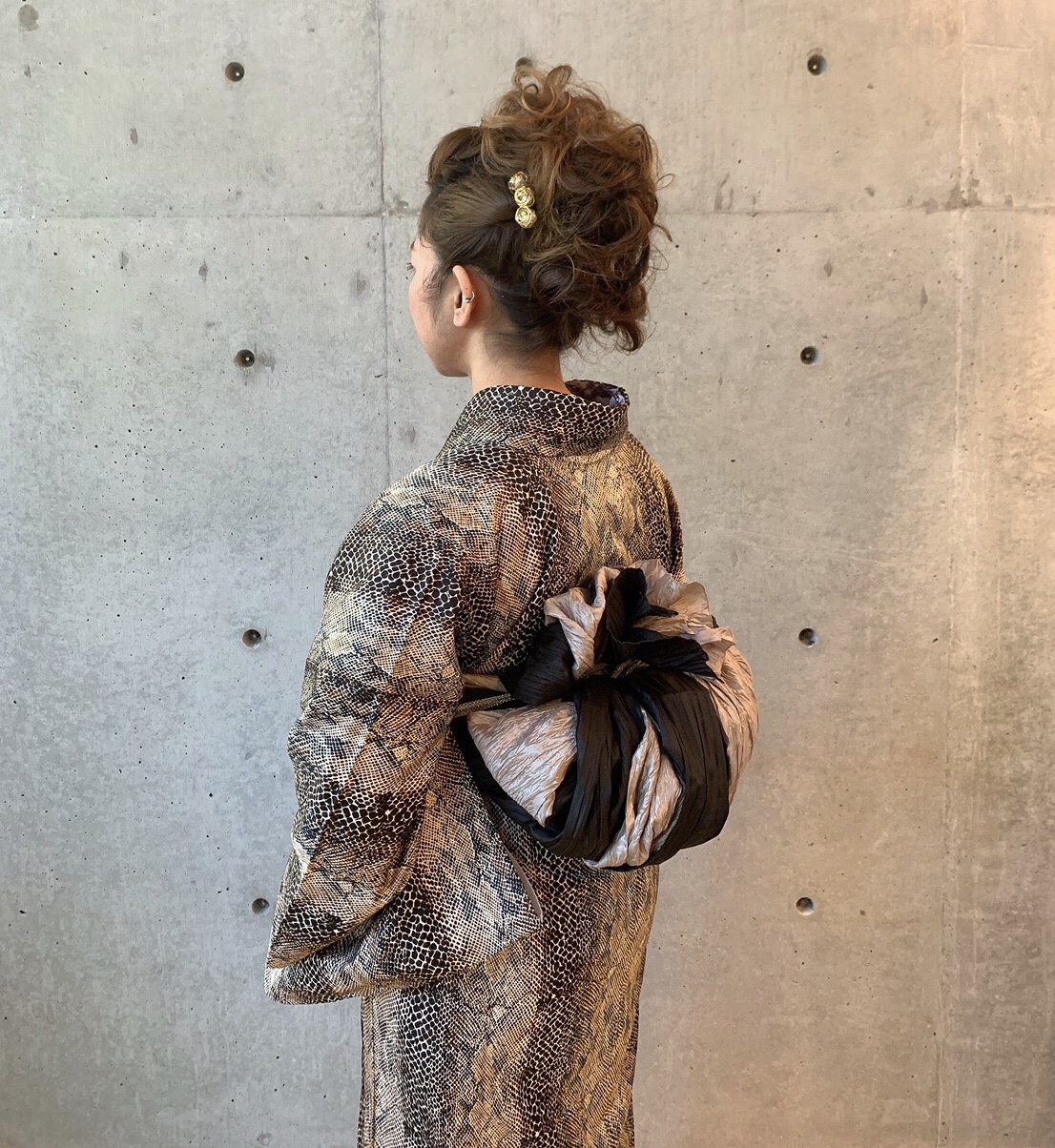

Even traditional styles, when adapted with modern colors and silhouettes, can become fresh and innovative.
Perhaps the reason kimono are gaining renewed attention among younger generations is because of their ability to embrace personal sensibilities and transform them into a powerful form of self-expression.
Kimono have a unique openness—an ability to accept diversity and individuality.
Today, kimono have become a familiar choice for everyday outings.
And rental kimono services play a major role in making that possible.
At Rental Kimono shops, we stay on top of current trends and always have the latest kimono and accessories ready for you.
Why not take advantage of this convenience and enjoy creating a look that’s uniquely your own?
"Individuality," "coordination," "color."
Let go of all preconceived notions for a moment—
Choose a kimono that you genuinely want to wear.
Pick the combinations that you love.
Wear styles that make you feel happy.
As mentioned earlier, what we love reflects who we are.
Loving something—and expressing that through fashion—is a reflection of how we live.
Enjoying kimono in this way may be one of the most modern interpretations of tradition.
There is no single correct answer.
As we've shown in this article, mixing and matching vibrant colors and patterns can be a true expression of self.
And following the traditional aesthetics and rules of kimono wearing is also a beautiful form of individuality.
Why not take that first step with a relaxed heart?
Open the door to rental kimono—and discover the joy of dressing freely and authentically.
Written by:
Rental Kimono Okamoto – Yasaka Shrine Store
〒605-0073 Kyoto City, Higashiyama-ku, Gionmachi 301-1
TEL: 075-532-0510
Website: www.okamoto-kimono.com
Instagram: @rentalkimonookamoto
TikTok: @rentalkimono_okamoto
Facebook: Rental Kimono Okamoto
X (formerly Twitter): @okamotokimono
Lit.link: lit.link/rentalkimonookamoto
Arashiyama Shop
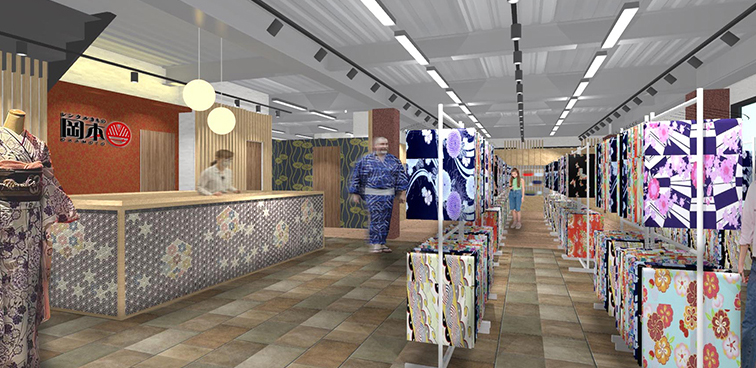
48-4 Saga Tenryuji Kitatsukurimichicho, Ukyo-ku, Kyoto 616-8374, Japan
Phone: +81-75-950-0805 / Fax: +81-75-950-0806 / E-mail: arashiyama@okamoto-kimono.com
Nearest Station: Arashiyama (Randen Line) / JR Saga-Arashiyama Station
Rental Kimono Okamoto - Fushimi Inari shop
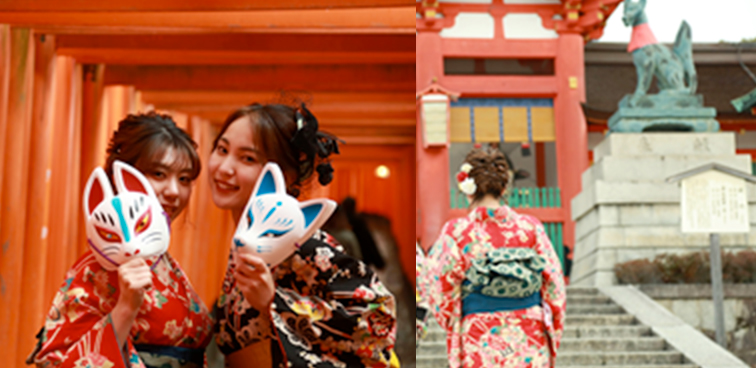
45-1, Fukakusa Inarinakanocho, Kyoto Shi Fushimi Ku, Kyoto Fu, 612-0807, Japan
Tel. +81-75-634-8900 / FAX +81-75-634-8901 / E-mail E-mail fushimiinari@okamoto-kimono.com
Nearest Station: JR Inari Station / Keihan Fushimi Inari Station
Rental Kimono Okamoto Gion Shop
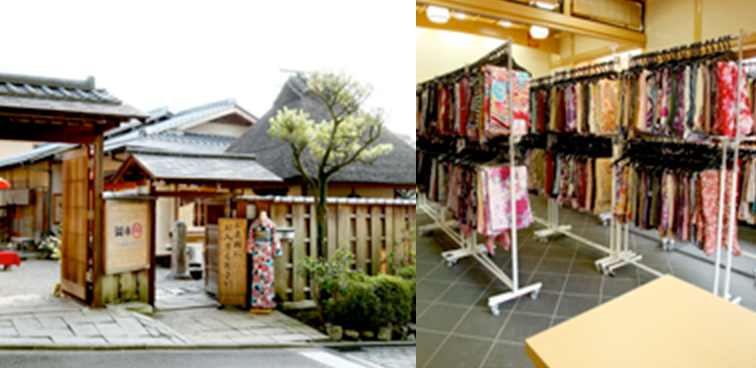
523 Washiocho, Higashiyama-ku, Kyoto 605-0072
Tel. +81-75-531-7890 / FAX +81-75-531-8383 / E-mail gion@okamoto-kimono.com
Nearest stop: City Bus Gion Stop
Rental Kimono Okamoto Kiyomizu Higashiyama Shop
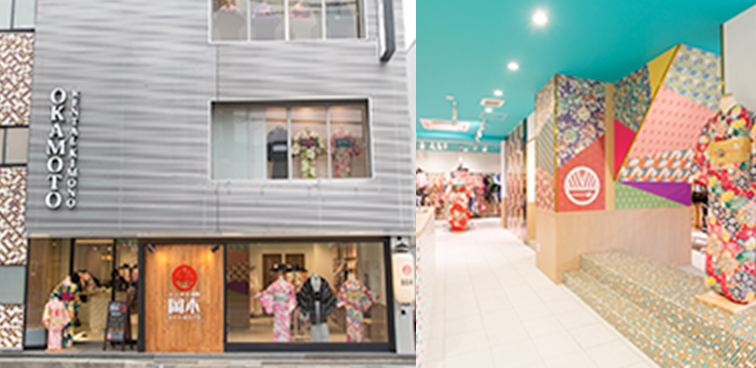
110-9 Tatsumicho, Higashiyama-ku, Kyoto 605-0855
Tel. +81-75-533-8900 / FAX +81-75-533-8910 / E-mail kiyomizuhigasiyama@okamoto-kimono.com
Nearest stop: City Bus Kiyomizumichi stop
Rental Kimono Okamoto Kiyomizu Shop
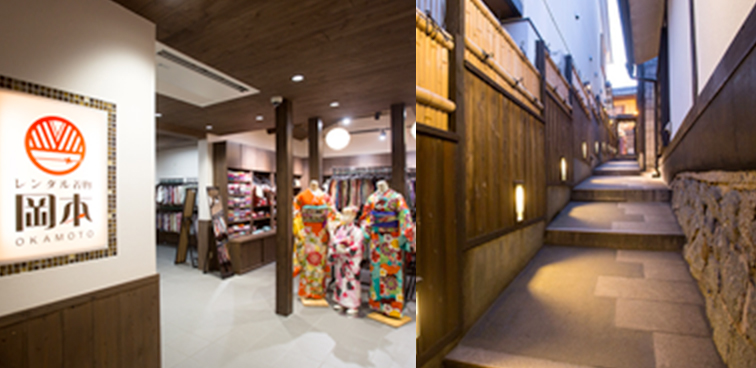
2-237-1-1 Kiyomizu, Higashiyama-ku, Kyoto 605-0862
Tel. +81-75-525-7115 / FAX +81-75-533-8960 / E-mail kiyomizuzaka@okamoto-kimono.com
Nearest stop: City Bus Kiyomizumichi stop
Rental Kimono Okamoto Main Shop
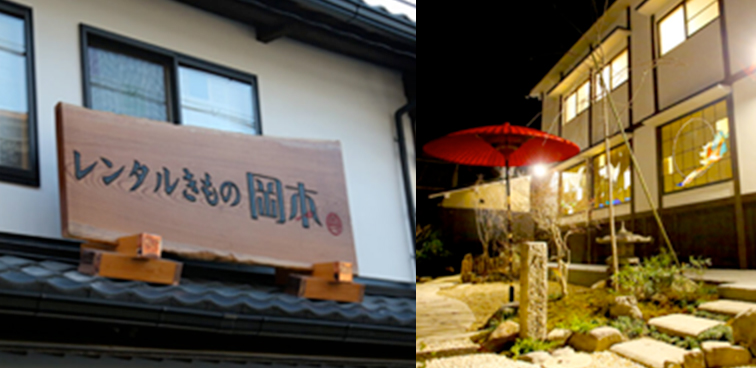
6-546-8 Gojohashihigashi, Kyoto Higashiyama-ku, Kyoto 605-0846
Tel. +81-75-532-1320 /Fax +81-75-532-1480 / E-mail honten@okamoto-kimono.com
Nearest stop: City Bus Gojozaka Stop
Rental Kimono Okamoto Yasaka Jinja Shop
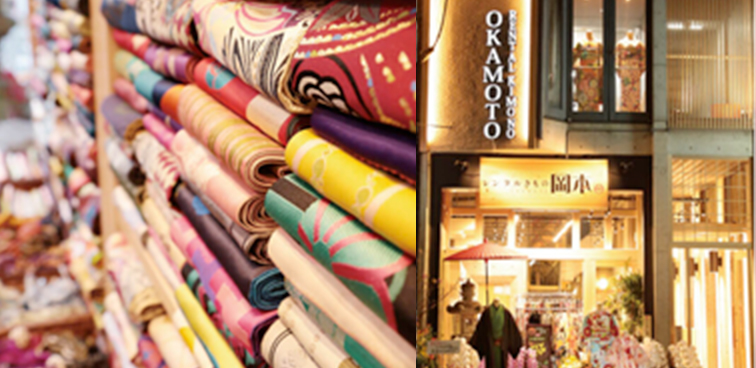
301-1 Gioncho, Higashiyama-ku, Kyoto 605-0073
Tel. +81-75-532-0510 / FAX +81-75-532-0511 / E-mail yasakajinja@okamoto-kimono.com
Nearest stop: City Bus Gion Stop
You can read a feature story about our store, Kyoto and kimono.
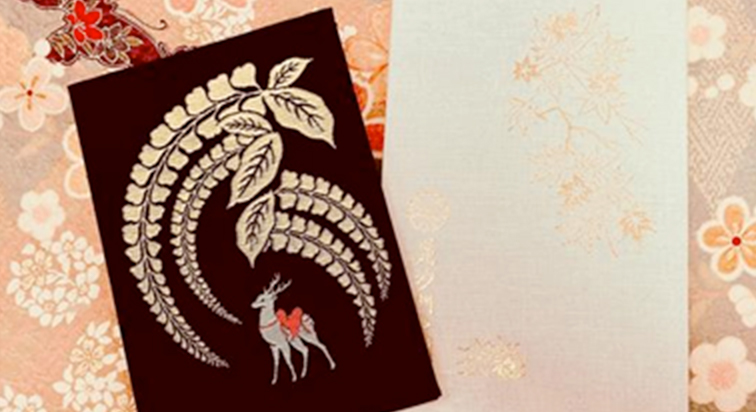
We are introducing various information on proper way of choosing kimono and others to match. Also you can access to our articles about regional, sightseeing information of Kyoto you can refert to before travelling to Kyoto.
You can view articles about kimono all written by us.
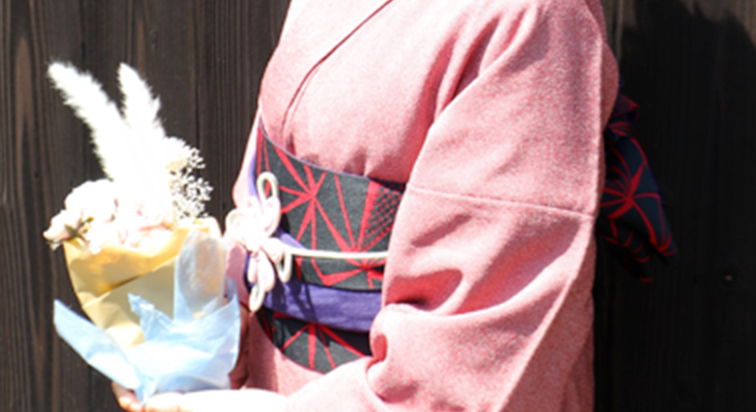
It features various articles about kimono such as history, manner, common sense and a proper way of matching kimono. They will add fun to your going out in kimono.







